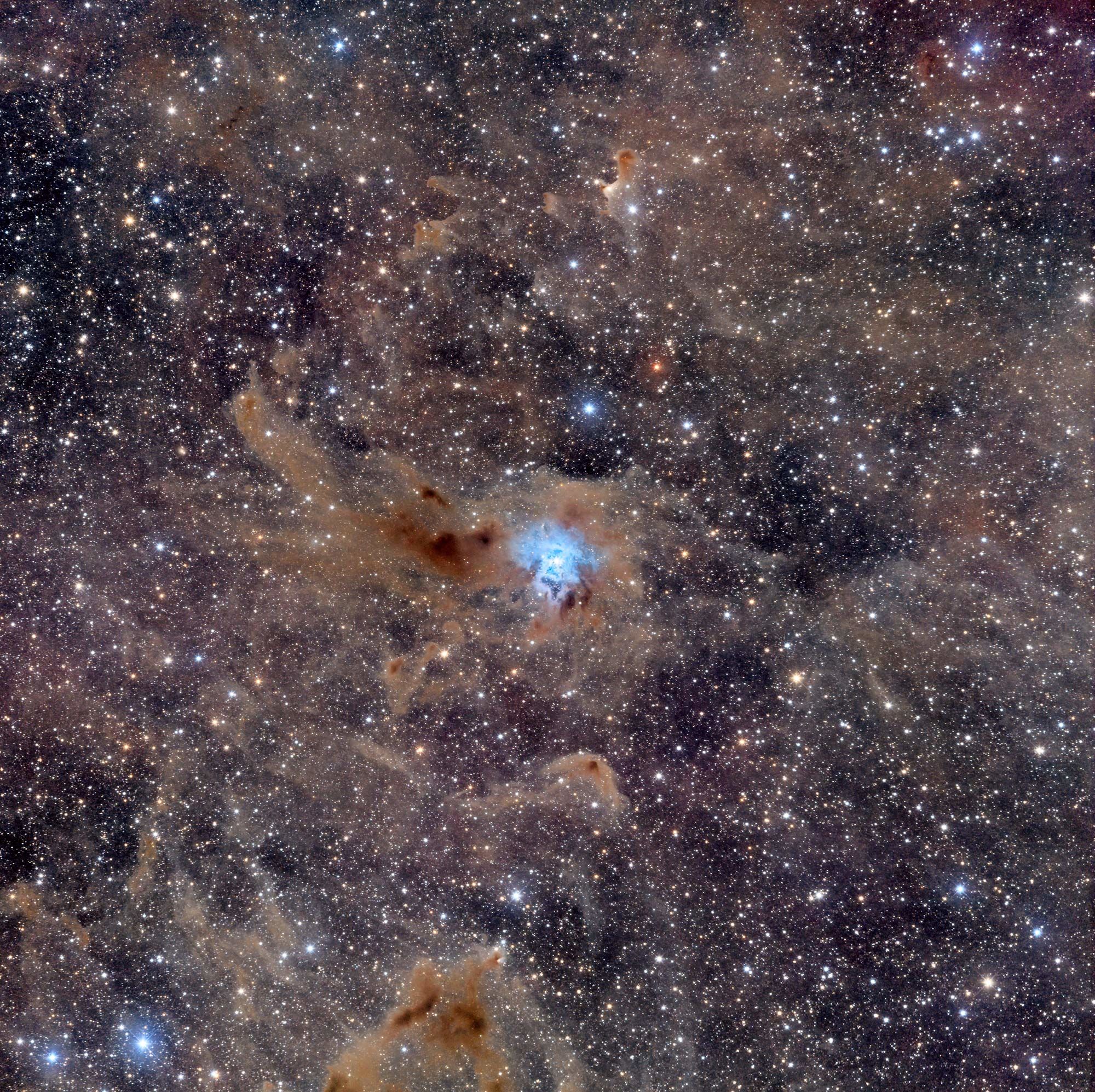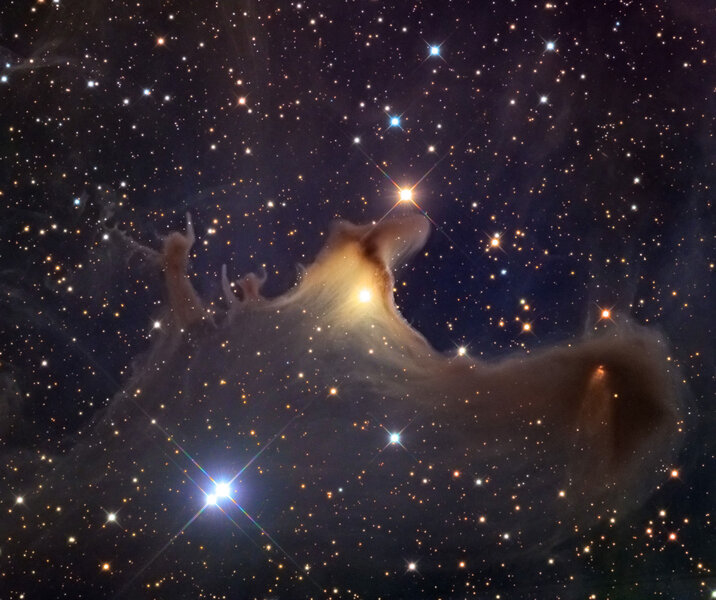Create a free profile to get unlimited access to exclusive videos, sweepstakes, and more!
A cosmic blue iris nebula blooms among the brown dust

Two things to keep in mind when you’re looking for cool things in our galaxy to observe: The Milky Way is flat, and it’s full of gas and dust.
Because it’s a flat disk, and the Sun (and the Earth and us) is in that disk, if you look around in the plane of the disk you’re looking right through the galaxy itself (if you look up and down, perpendicular to the disk, you’re looking out of the disk). And because it’s filled with interstellar junk, when you look in the plane of the disk you’re seeing the most stuff.
It’s like standing in a huge warehouse with a low roof. And oh yeah, it’s filled with thin smoke. Look around and you’re looking deeply into the smoke, but look up and down and you see the ceiling immediately above you and the floor below. You don’t see as much smoke.
The constellation of Cepheus (the King) happens to lie in the plane of the galaxy, so you’d expect it to be choked with gas and dust (and stars, since gas and dust is where stars come form).
And you’d be right. For proof, I offer the Iris Nebula, aka NGC 7023, a gorgeous blue bloom just embedded in vast whorls of dust.
Hoo yeah! Cool, eh? That image was taken by my friend and astrophotographer Adam Block. Normally the images I post from him are using a decently massive 0.8-meter telescope, but for this he used a Takahashi Epsilon-180ED, a relatively small 18-centimeter telescope. It’s what’s called an astrograph, meaning a ‘scope specifically designed for photography, and to be honest it’s hard not to drool looking at the specs for it. It’s a very, very nice high-end ‘scope.
It provides a wide field of view, over 3° across, which makes the Iris Nebula — the blue splotch in the middle — look somewhat, well, tiny. The advantage is that it can show the sprawling clouds of brownish dust around the nebula, and oh boy does it. You can see cirrus-like feathery wisps of dust all over the image, peppered with much thicker clots of it too.
So what’s going on? Well, regions like this are where stars are born. Sitting next to the Iris Nebula is a young star called HD 200775, which is more massive, hotter, and more luminous than the Sun. It blasts out blue light, and the dust in the Iris reflects that light back to us. More accurately the light gets scattered, hitting dust molecules in the cloud and sent off in random directions (this is also why our sky is blue). Red light tends to go right through, so we preferentially see that blue light coming our way from dust around the source star. In general the star has to be fairly close to the dust cloud; there are other blue stars in Adam’s shot, but they’re too far away from the dust to have much of an effect.
The Iris Nebula is about 1/3rd of a degree across (somewhat smaller than the full Moon in the sky). At a distance of about 1,180 light years, that makes it about 6 light years wide. It really does look much like an iris flower, though that’s more obvious in an astrophoto by Sara Wagner (seriously, click that; it's gorgeous) which shows more detail. Funny: If that blue star weren’t there, it would just look another blob of dust in the field.
If you get really detailed images — like say, with Hubble — you can see all kinds of fine structure in the nebula:
This shows a small section of the northeast part of the nebula (to the right in Adam’s shot), and you can see how the dust forms lovely streamers and piles. It almost looks like a cloudscape on Earth!
On Wagner’s page, she mentions another object close-by I have to mention: VdB 14, aka the Ghost Nebula. Why’s it called that? In Adam’s image it’s hard to see, near the top center, but he also took a shot of it with 0.8-meter ‘scope I mentioned earlier, and I think that makes it pretty obvious:
<ghostly voice>oooooooOOOOOOOOoooooooo</ghostly voice>
I’ll have to remember this one come end of October.





























